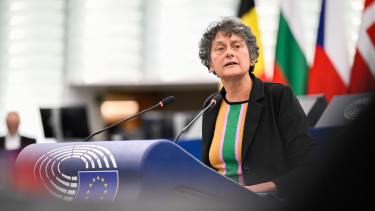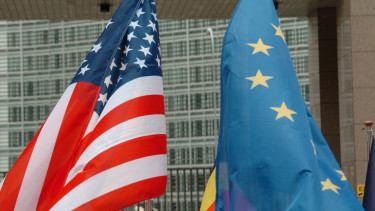European Commission explains budget proposal with facts

The financing of the next Multiannual Financial Framework must be reformed and modernised. Europe needs a less complex, more transparent and fairer system that is better aligned with the EU policy objectives. The Commission has proposed alternative sources of revenue – for example revenue from the Emissions Trading System, or the contributions based on non-recycled plastic. These are directly linked to the EU policy priorities and will make it possible to reduce the national contributions based on gross national income (GNI) – the primary source of revenue for the EU budget.
Budgetary balances only show the difference between what a Member State contributes to the EUbudget and the money that beneficiaries registered in that same country get, after a series of statistical adjustments. This statistical construct is not a relevant guide for determining national contributions, given the structure of the budget today in which an increased share of funds is allocated to European public goods.
The budgetary balance concept cannot measure the benefits for the EU Member States from being part of the single market, addressing the challenge of migration and fighting terrorism and climate change together.

Neither has it measured the business opportunities that cohesion policy – the EU’s main investment policy – creates for businesses from across the Union. The EU contributes significantly to the economies of its Member States and this is completely ignored in these calculations, says the EU executive. For example, the single market has a significant and direct positive impact on jobs and growth – its benefits are estimated to be of the order of 10% of GNI; more than ten times the contribution Member States make to the budget. (see chart above)
The proposed size of the budget will make sure that the Union has the sufficient resources to turn these ambitions into reality. It also takes into account the budgetary consequences of the withdrawal of the United Kingdom.
The Commission proposed that the Union budget will invest EUR 1,279 billion in 2021-2027 (1.114% of EU-27 GNI). The contribution from each Member State will be calculated based on how much the EU will have to pay to the beneficiaries of the EU budget each year, and after deducting revenue from other sources such as customs duties and fines, up to an overall maximum of EUR 1,246 billion (or 1.08% of EU27 GNI).
Today the Union of 27 invests 1.16% of EU 27 GNI, including the European Development Fund. The proposed budget is therefore already smaller compared to the current one.

With a moderate decrease compared to what the Union spends today in the 27 Member States without the UK, the proposed MFF can foster policies where Union action can achieve more than each Member States alone: excellence in research and innovation, climate action, migration, border management, security and defence, Erasmus and digital investments.
In its proposal, the Commission has made sure that the EU has the necessary resources to act in key priority areas like climate and environment policy, migration and external action, as well as to provide EU support for structural reforms in the Member States.
In its proposal for EU’s next long-term budget, the Commission has suggested, for the first time ever, that the combined share of funding that goes to these policy areas is slightly higher than that of the common agricultural policy or the cohesion policy, in line with the political priorities and in line with what citizens are asking for.
Expressed in % of GNI, spending increases in key programmes such as Horizon 2020, Erasmus+, Border management, the security fund and the creation of new programmes such as Digital Europe and the Defence fund, support the EU’s strategic agenda 2019-2024. These increases remain modest compared to long-standing policy areas and allow for a realistic overall MFF level, while making it possible to modernise the budget.


Among other things, the EC is proposing a 2.6-fold increase in the money for migration and border management, as well as a new thematic facility to flexibly reallocate resources when and where needed for managing migration inside the EU. The Commission has proposed a new mechanism that establishes a direct link between the respect for the rule of law and the EU budget. This is not a punitive measure. Nor is it a sanction. It is a way to make sure that the EU finances are protected and that the budget is efficiently spent.

You can find more charts and explanations in the EC's technical briefing here.













